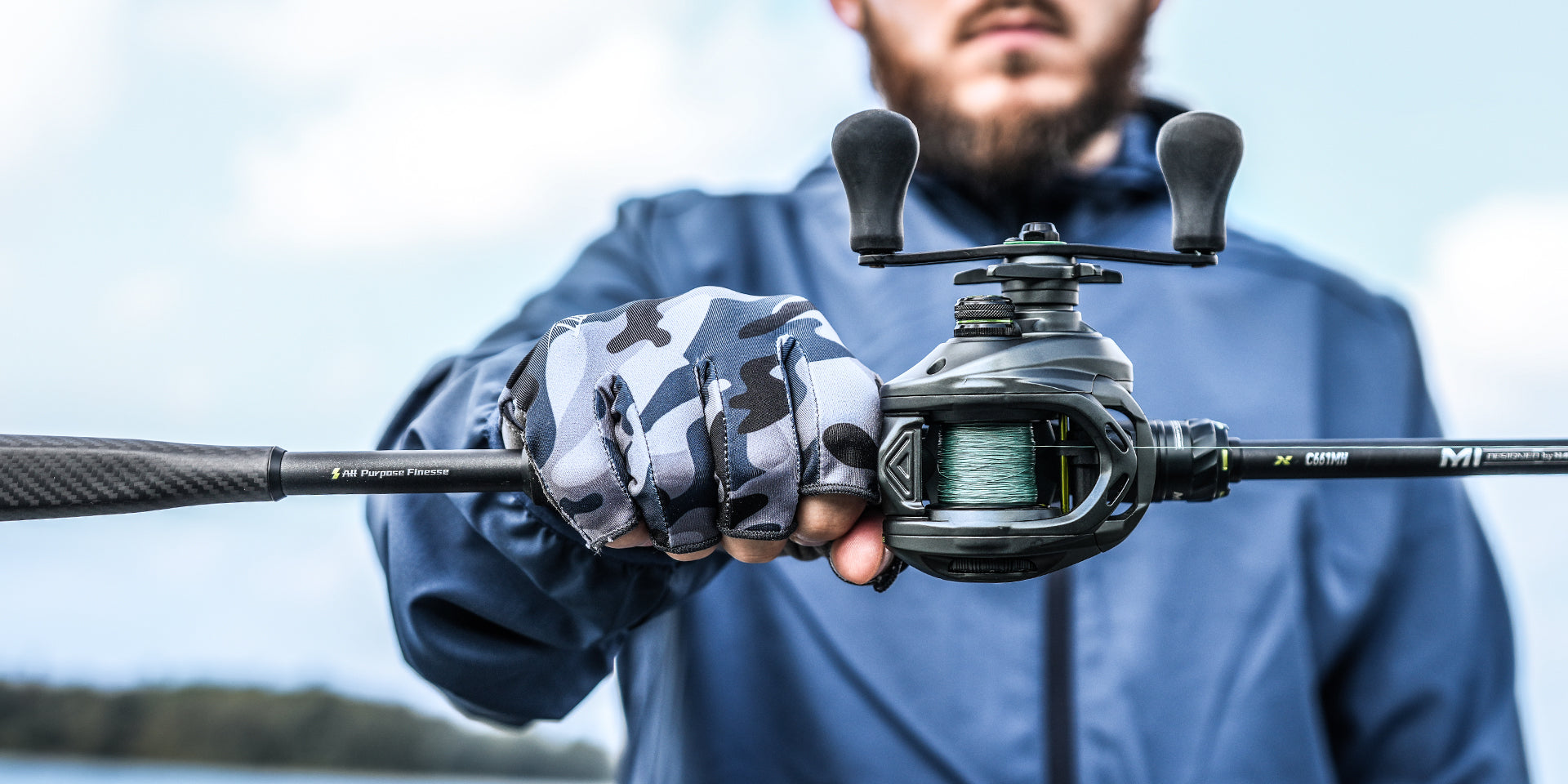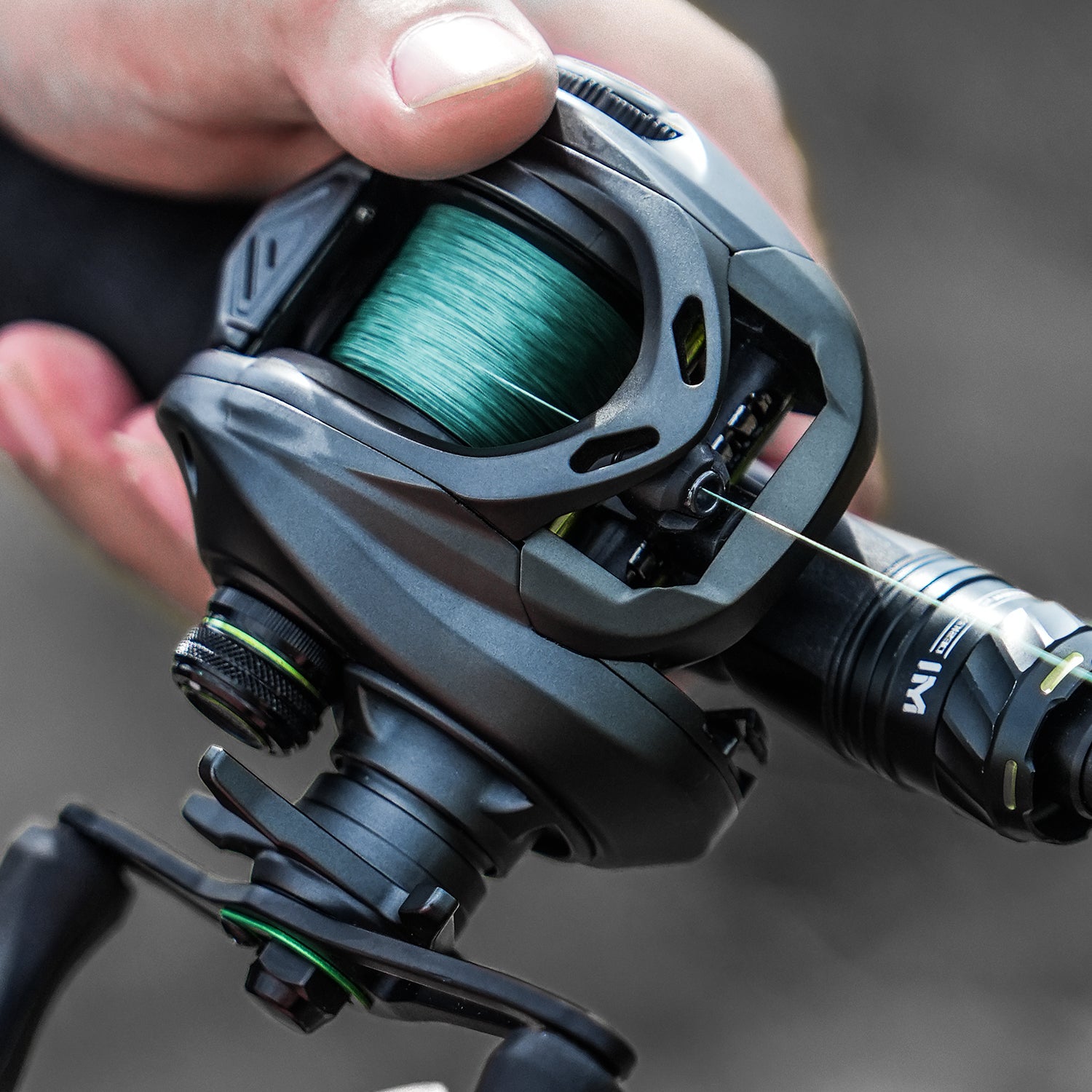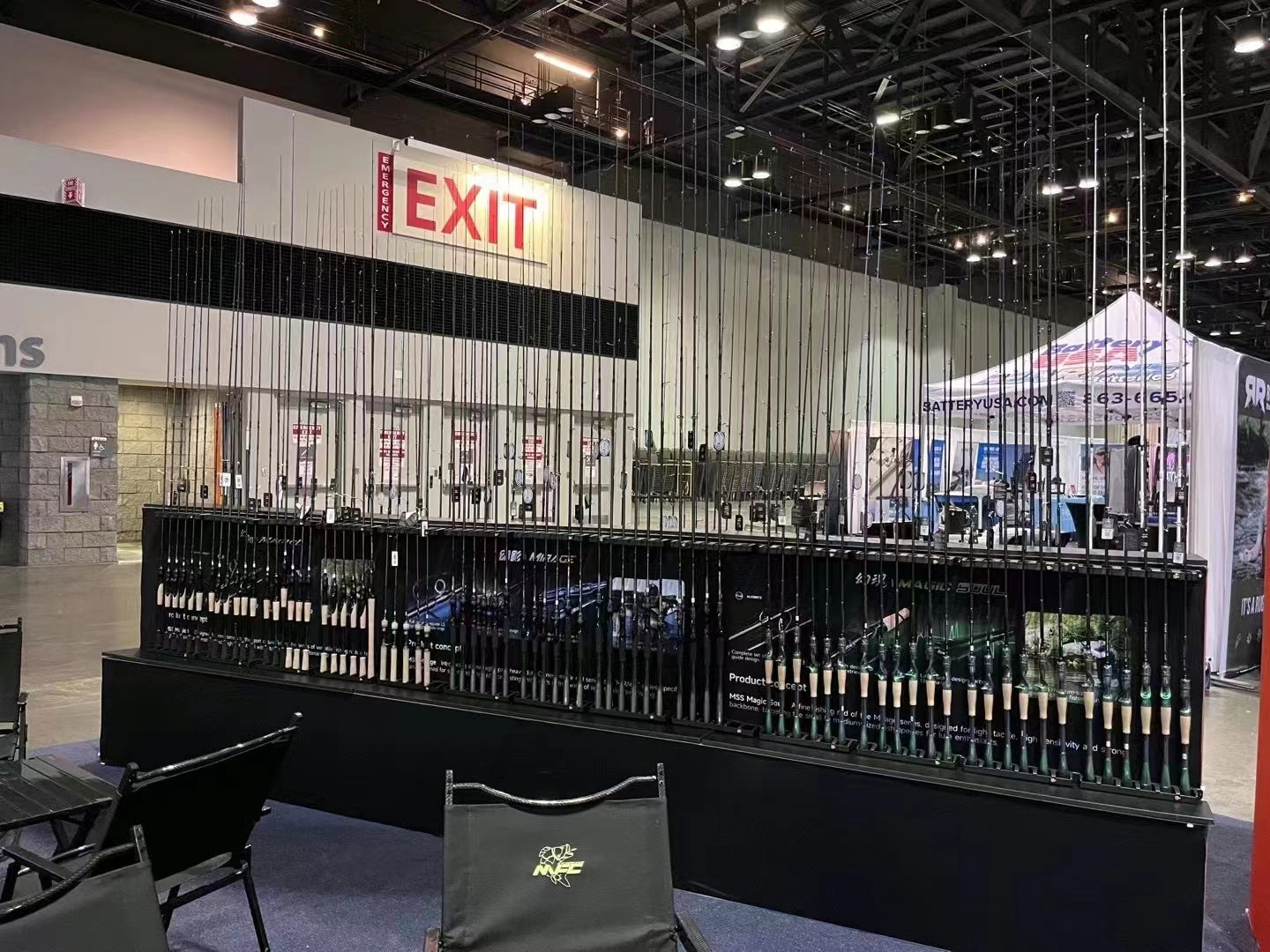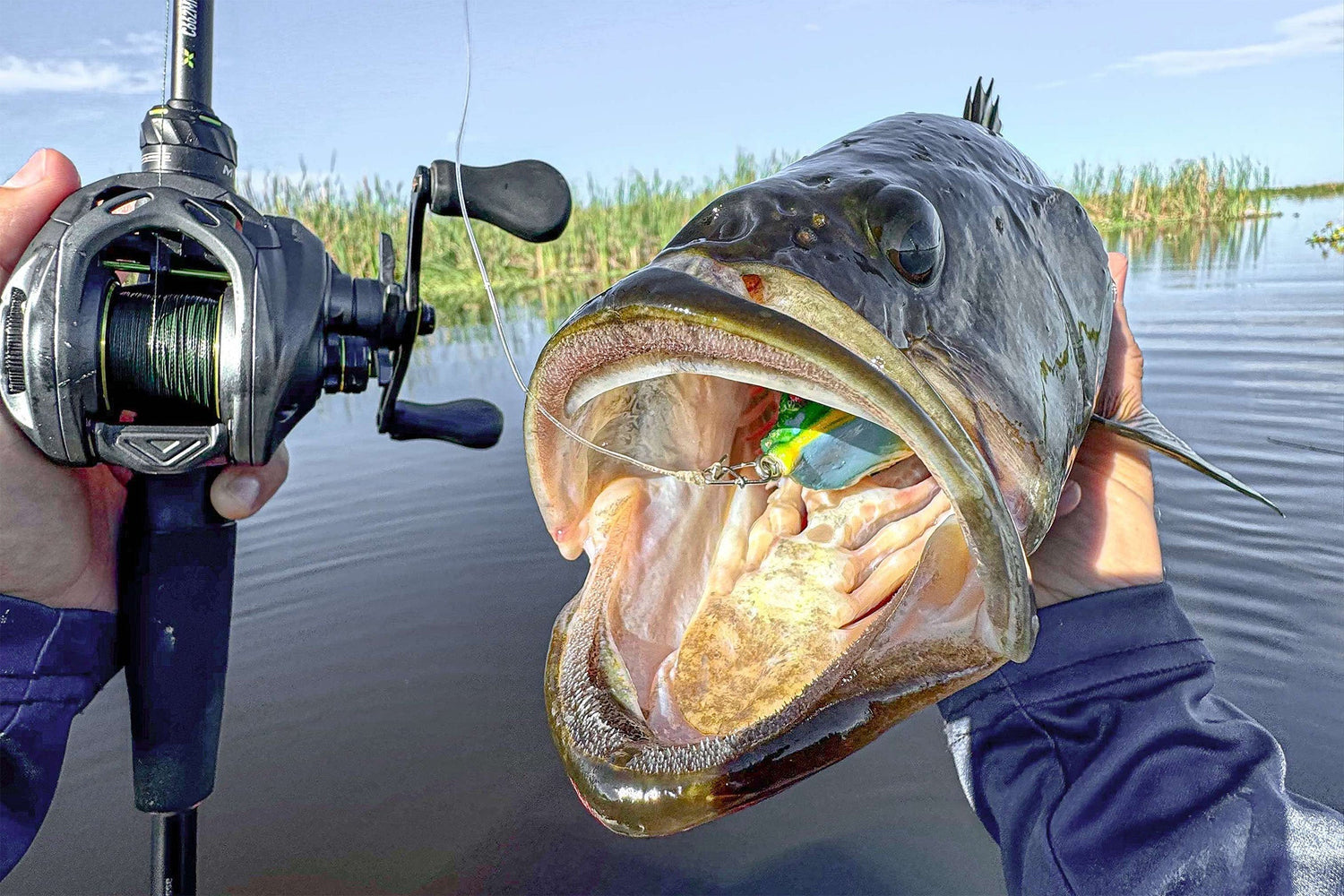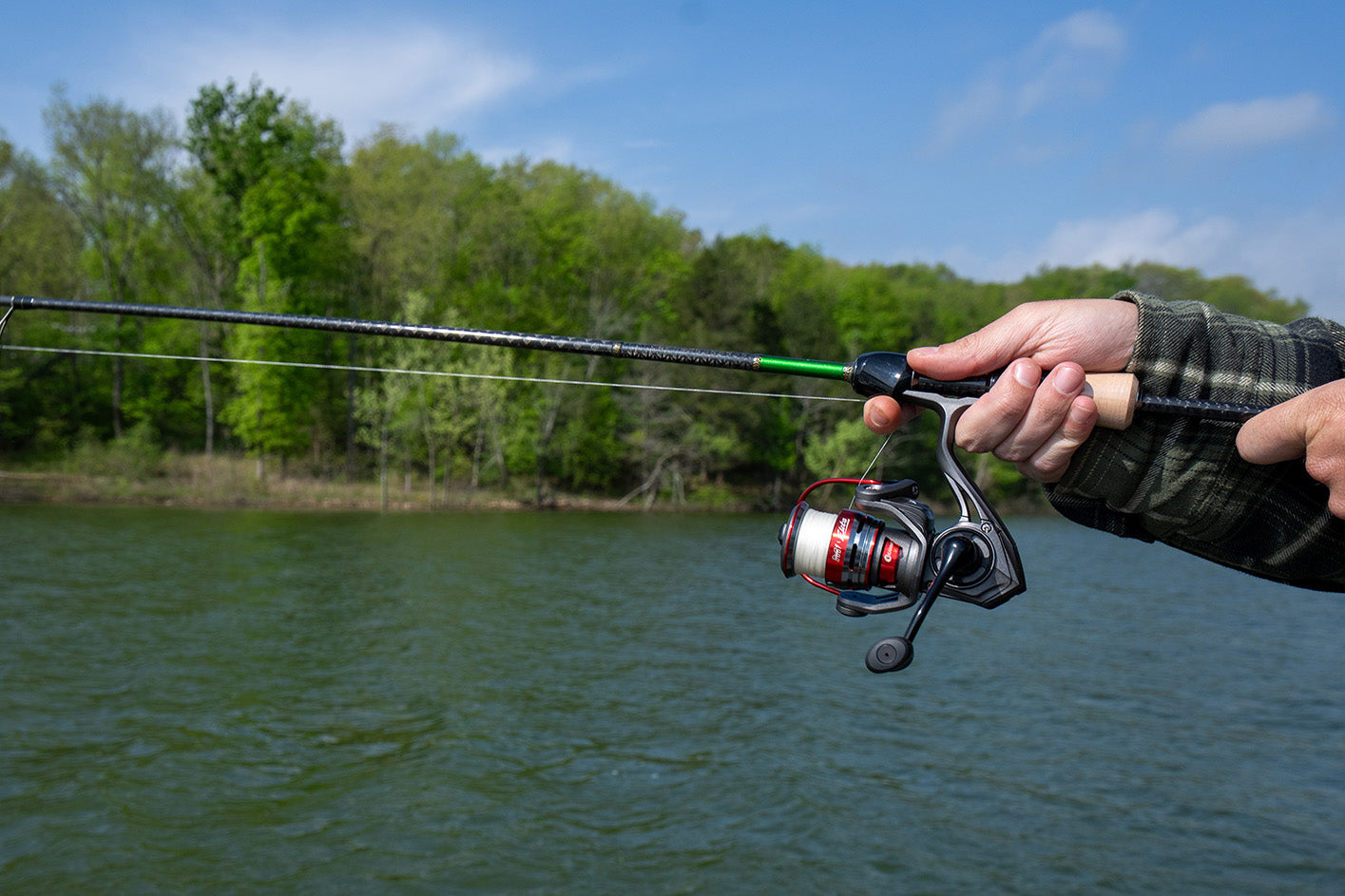Headed out for a relaxing day of freshwater fishing? Whether you're hitting a calm lake, a slow-moving river, or a big reservoir, being prepared is key to a good time. This checklist will help make sure you have everything you need, whether you've been fishing for years or are just starting out. No matter how much experience you have, this will help you enjoy your day.
Primary Fishing Equipment: The Foundation of Your Angling Success
Before you head out to your favorite fishing spot, let's double-check you've got the basics covered.

Fishing Rod Selection
Obtaining the right rod is the initial step. There are several kinds of fishing rods, and each of them is used for different types of fishing and fish.
Spinning rods are a solid all-around option. They're easy for novices to manage and perform adequately with a lot of diverse lures and baits. For a versatile and travel-friendly fishing experience, the Handing M1 two-piece spinning rod offers a durable, sensitive carbon blank with quality components at a competitive price.
Baitcasting rods give you more control and power while casting. They're usually the better option if you're casting bigger lures or have experience fishing.
When choosing a rod, look at the following: the rod length, the power (how much it bends), and its action (where it bends). Shorter rods are also easier to manage when you're fishing in tight areas, like around trees. Longer rods let you actually cast your lure way out there. "Power" tells you how big of a fish the rod can haul in – a heavy-power rod can haul in those trophy fish. "Action" is where the rod bends: a fast-action rod bends closer to the tip, so you'll be able to feel even the lightest nibble. There's a slow-action rod, which bends away from the handle, giving you the power needed to reel in a whopper. The power rating of a fishing rod directly influences what size fish you can effectively target and what fishing techniques will work best.
It's always a good idea to keep a spare rod just in case one will be broken or something goes wrong.
Fishing Reel Basics

Make sure your reel is a good match for the rod you've chosen. Spinning reels are usually used with spinning rods and are known for being easy to use. The Handing M1 spinning reel offers a smooth and reliable performance with its lightweight design and durable construction, making it an excellent choice for anglers of all skill levels. Baitcasting reels go with baitcasting rods and give you more control and power, especially for heavier lines and lures. Spinning reels are generally considered the best fishing reel type for beginners due to their ease of use and versatility across different fishing conditions.
Make sure your reel has the right kind of fishing line on it.
Fishing Line Options
The line is what connects you to the fish, so picking the right one is super important.
Nylon line is cheap and works well for most kinds of fishing.
Fluorocarbon line is almost invisible in the water, so it's a good pick when you're trying to catch fish that are easily spooked.
Braided line is really strong and doesn't stretch much, so you can feel even the slightest nibble and set the hook really well.
Think about bringing extra line or different pound test lines so you can adjust to different fishing conditions. The "pound test" tells you how much weight the line can hold before it breaks.
| Line Type | Strengths | Best For |
| Nylon (Monofilament) | Affordable, stretchy, versatile | General fishing, beginners |
| Fluorocarbon | Nearly invisible underwater, sinks quickly | Clear water, Skittish fish |
| Braided | Very strong, no stretch, sensitive | Heavy cover, large fish |
Terminal Tackle & Accessories: The Small Stuff That Matters
Terminal tackle is all the stuff at the end of your fishing line – things like hooks, weights, and snaps. It's what connects you to the fish and your bait.
About Hooks
You gotta have a bunch of different hooks. Different sizes and shapes work better with different baits and for different fish.
- Single hooks: These are the most common. You can use them with almost any kind of bait.
- Treble hooks: These have three points and are usually on lures. They give you more chances to hook a fish.
- Circle hooks: These are made to hook the fish in the side of its mouth. That makes them good if you're gonna let the fish go.
- Worm hooks: These are just for those soft plastic worms and other similar fake baits.
Weights and Sinkers
You need weights to get your bait down where the fish are. What kind of weight you use depends on where you're fishing and how you want the bait to look to the fish. Small split-shot weights are easy to put on and take off. Egg sinkers let the line slide through them, so the fish doesn't feel the weight when it bites.
| Weight Type | Best For | When to Use |
| Split Shot | Light presentations | Small streams, clear water |
| Bullet Weights | Texas rigs, Carolina rigs | Fishing around cover |
| Egg Sinkers | Allowing free line movement | Bottom fishing, drift fishing |
| Drop Shot Weights | Finesse presentations | Suspended fish, clear water |
Connection Components
Swivels are small connectors that prevent line twist, especially when using lures that spin. Snap swivels allow you to quickly change lures without having to re-tie your line.
A leader is a section of line tied between your main line and your hook or lure. Fluorocarbon leaders are nearly invisible underwater and can be helpful when fishing for wary fish. Wire leaders are essential when targeting fish with sharp teeth, such as pike or musky.
Bite Indicators
Bobbers, or floats, are indicators that signal when a fish is biting. Slip bobbers can be adjusted to fish at different depths, while fixed bobbers are attached directly to the line.
Lure Selection
If you're planning on lure fishing, you'll need a selection of lures to match the target species, water conditions, and season.
Spinnerbaits create flash and vibration, attracting fish in murky water. Crankbaits imitate swimming baitfish and can be retrieved at various speeds. Jigs are weighted hooks that can be fished along the bottom or retrieved through the water column. Soft plastics come in a variety of shapes and sizes and can be rigged in countless ways to imitate various prey.
Bait Options
Live bait, such as worms and minnows, can be incredibly effective for attracting fish. Prepared baits, like dough balls or commercial catfish bait, are also popular options. Consider bringing a container to keep your live bait fresh and lively.
Natural baits like corn kernels or wheat grains can be highly effective for certain species like carp. These should be stored in sealable containers to maintain freshness.
Tools & Fish Handling: Ensuring Safety for You and the Fish
Having the right tools not only makes fishing easier but also ensures the safety of both you and the fish.

Essential Fishing Tools: Safety and Convenience in One
A sharp line cutter or knife is essential for cutting fishing line and rigging lures. Fishing pliers are a multi-purpose tool that can be used for crimping weights, removing hooks, and cutting line.
A hook remover or fish gripper allows you to safely remove hooks from fish without injuring yourself or the fish. This is particularly important when dealing with toothy fish or deep-set hooks.
Landing Your Catch
A landing net helps you safely bring fish to hand, especially larger ones. Using a rubber net is better for the fish because it doesn't remove their protective slime coat. The right size net depends on your target species – small trout require a different net than trophy bass.
Fish Handling and Storage
A stringer allows you to keep your catch in the water, while a live well or cooler keeps them fresh until you're ready to clean them. If you practice catch and release, minimize the time the fish spends out of water and wet your hands before handling to protect their slime coat.
A measuring tape and scale can be used to measure the size and weight of your catch, and to ensure you're complying with local fishing regulations. Many waters have size and bag limits, making these tools essential for responsible angling.
A towel or rag is always handy for wiping your hands and cleaning your equipment. This simple item can make your fishing experience much more comfortable, especially after handling bait or fish.
Safety & Comfort: Prioritizing a Safe and Enjoyable Trip
When you're planning a fishing trip, your safety and comfort should be number one.
Legal Stuff
Always make sure your fishing license is up-to-date and bring it with you. A lot of states let you keep a digital copy on your phone, but it's a good idea to have a paper copy too, just in case.
Beat the Weather
Protect your skin from the sun with sunscreen, a hat, and sunglasses. Polarized sunglasses help you see into the water better, so you can spot things like logs or even fish. Put on more sunscreen regularly, especially after you've been in the water.
Wear layers of clothing so you can adjust to the weather. Even if it looks sunny, a rain jacket is always a smart idea. The weather can change fast, and being prepared means you can keep fishing all day.
Safety Gear
Mosquitoes and insects can really ruin a fishing trip. Use insect repellent on your body and clothes, especially near ankles and wrists.
Wear waterproof boots or shoes that have a good grip so that you don't slip. Fish areas are usually slippery and wet, so an excellent pair of shoes is an absolute must.
Pack a first-aid kit for small cuts and scrapes. Pack bandages, antiseptic wipes, pain relievers, and any prescription medication you are currently taking.
Bring plenty of water and snacks to stay hydrated and keep your energy up. You can become dehydrated fast, especially if it is hot outside or you're really focusing hard on fishing.
If you're fishing in a boat or in deep water, where you could fall in, wear a life jacket (PFD). The new ones are wonderful and won't affect your casting.
If you're fishing at night, bring a flashlight or headlamp. Headlamps are best because they leave both hands free.
Always carry a charged cell phone with you in case you need to call someone or need help in an emergency. Keep it in a waterproof bag or case to protect it.
Storage & Transport: Keeping Everything Organized
You'll need a tackle box or bag in which to keep all of your hooks, lures, and other assorted tackle. Get one that has dividers which can be moved so you can set it up to your specifications.
A rod case or tube will protect your fishing rods when you're traveling. This is especially useful if you have multi-piece rods, since the joints may be delicate.
Keep your food, drinks, and any fish you catch cold by using a cooler. Think about what size you'll need – a small cooler will do for a short trip, but you'll want a larger one if you're going out for the day.
Ensure Your Gear is Ready, and Your Mind is Too!
With this checklist, you're better equipped, and you won't forget anything crucial. Good preparation is the secret to an excellent fishing experience. Get all things in order, and then head to your favorite spot to enjoy nature. To a day of relaxation, excitement, and hopefully, a satisfying catch!


